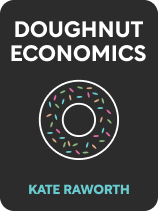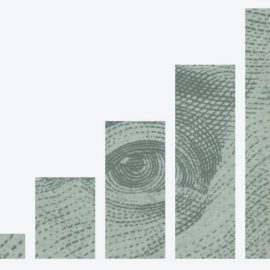

This article is an excerpt from the Shortform book guide to "Doughnut Economics" by Kate Raworth. Shortform has the world's best summaries and analyses of books you should be reading.
Like this article? Sign up for a free trial here .
Is Kate Raworth’s Doughnut Economics worth reading? What is Raworth arguing when invoking the concept of the doughnut economy?
In Doughnut Economics, heterodox University of Oxford economist Kate Raworth proposes redefining how economics is taught and the role that economists play in shaping public policy, shifting from a growth-centered approach to a human-centered approach that harnesses the power of economics for the betterment of humanity. The premise is no doubt noble, but Raworth’s argument received heavy criticism.
Keep reading for Doughnut Economics‘s criticisms.
Doughnut Economics: Seven Ways to Think Like a 21st-Century Economist
In Doughnut Economics, Kate Raworth argues that traditional economic theory has been too focused on the economy as a measure of GDP, income, and output.
She writes that, in doing so, it has failed to take into account the broader global context in which economies exist—and the ends they are truly meant to serve. According to Raworth, the economy’s purpose is to promote human prosperity and happiness. This means 1) a just and equitable society where everyone has the material resources to pursue their highest dreams, but also 2) a sustainable biosphere that enables the engine of the economy to produce the necessary means for human prosperity but does not deplete vital natural resources.
In the book’s central metaphor, Raworth reimagines the priorities of economic policy as a ring-shaped doughnut. The inner circle represents the zone of deprivation—an economy that does not produce enough of the necessary goods and services to sustain the population with adequate levels of food, shelter, health care, and other essential needs. The outer circle represents the limits of economic growth beyond which the economy begins to outstrip the planet’s natural resources, leading to devastating consequences like global warming and ocean acidification, which threaten life on Earth.
She writes that the economy must therefore stay within the bounds of the two circles, within the “dough” of the doughnut—growing enough to meet the full spectrum of human needs, but not so much that it outstrips the planet’s ability to provide the resources that make human civilization possible.
| Doughnut Economics: Criticisms and Praise Contemporary reviews of Doughnut Economics praised Raworth for treating environmental issues as fundamental to the social science of economics. In its review of the book, published in 2017, The Guardian noted that for far too long, the economics field has treated the environmental challenges of growth, like pollution and deforestation, as beyond its concern or scope of study. Even the language used by economists to describe these negative impacts—“externalities”—implies a detachment from the real-world effects of unrestrained growth. The reviewer credited Raworth for putting the planet’s ecological boundaries and limits squarely back in the center of the economics discussion. However, the same review noted that Raworth tended to glibly dismiss the political and ethical challenges of how to bring about a massive redistribution of economic resources without resorting to force or the wholesale destruction of capital. The Guardian noted that Raworth seems to (naively, in their view) believe that simply using the right language and rhetorical framing will persuade powerful entrenched interests, governments, and billions of ordinary consumers to change their ways and move toward a more redistributive, sustainable, and communal form of economic organization. A review of the book for the London School of Economics praised Raworth’s clear way of explaining basic economic principles to newcomers, but faulted her for relying too much on flowery metaphors (like the central “doughnut” metaphor) that present an idealistic vision, while offering little in the way of practical policy advice for how to bring that vision to life. But perhaps the most notable reaction to the book’s ideas has been by the city of Amsterdam in the Netherlands. There, in April 2020, the municipal government officially declared “doughnut economics” as the city’s guiding economic policy, with the stated goal of bringing all the city’s residents into the inner ring of Raworth’s doughnut. Raworth herself has played a leading role in the Amsterdam project through her organization, the Doughnut Economics Action Lab (DEAL). She has helped city officials design policies related to sustainable infrastructure, citywide job-creation programs, and reforms to city contracting practices. Other cities and regions have considered emulating Raworth and Amsterdam’s doughnut model, including Copenhagen, Denmark; Brussels, Belgium; Dunedin, New Zealand; Nanaimo, Canada; and, in the US, Portland, Oregon and Austin, Texas. |

———End of Preview———
Like what you just read? Read the rest of the world's best book summary and analysis of Kate Raworth's "Doughnut Economics" at Shortform .
Here's what you'll find in our full Doughnut Economics summary :
- Why we need a top-to-bottom redesign of our global economic order
- Why long-term economic growth is unsustainable
- How inequality fuels a feedback loop that leads to more inequality






